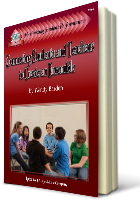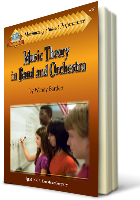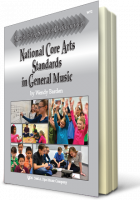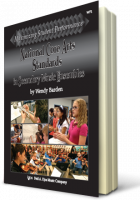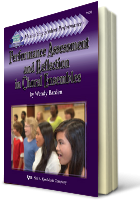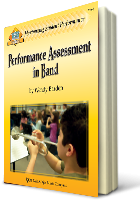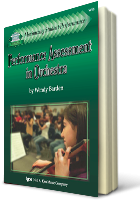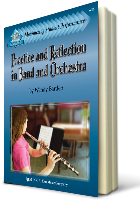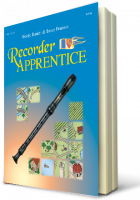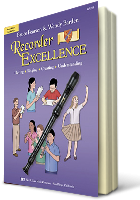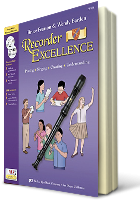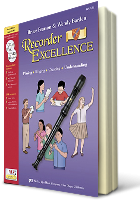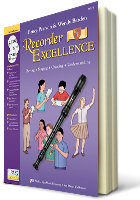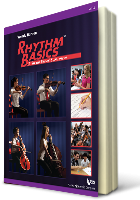“See the dog.” — Developing fluency
There are times when my young—and not so young—band and orchestra students have come to rehearsal and yes, technically, they could play the music they were assigned. Their fingerings or finger patterns, pitches, and rhythms were accurate, but the music sounded choppy. A slight hesitation was needed for them to execute the next notes, sounding a bit like “See.The.Dog.”
To get rid of that hesitation—to develop fluency—musicians need enough repetition to be able to play pitches and rhythms automatically, without having to think about the fingering or how to count the rhythm. Muscle memory has to take over so students’ brains can focus on the expressive intent of the music and making meaning from the notes they are playing.
Over the years, I’ve relied on five overarching rehearsal strategies to help my band and orchestra students play more fluently.
1. Practice new pitches or rhythms separately before incorporating them into the music. With a new rhythm, we might play it on a single pitch or open string, clap and count the rhythm, play the rhythm on each degree of a scale, or improvise a call and response exchange until it becomes very familiar. Other times there may be new pitches to learn. Those we might repeat in scales until, again, the fingering becomes automatic. When we incorporate the new rhythms or notes in repertoire, we can first isolate and repeat those measures as needed, then continue by playing larger sections of the piece.
A related aspect of music reading also impacts fluency: Encourage students to read music in chunks—one pattern, one run, or one measure at a time—rather than looking at each individual note. “See the dog.” rather than “See.The.Dog.”
2. Listen to models of fluent, expressive playing. It’s difficult for students to imagine what a fluent performance sounds like if they have no point of reference. After we have done the “wood-shedding” on rhythms and notes, I often bring in a recording of the piece and we follow along with our music and pencils. With fluency, students can hear various elements of the piece and move closer to replicating it.
Students may also listen to models of expressive playing as they are working on a solo or exercises in their lesson book. Better than just listening is to listen, and then play along. Remind students that play-along recordings are most useful after they have attained a certain level of fluency. (Recordings won't slow down or pause while a student figures out a rhythm or fingering.) Bonus! Accompaniment recordings make playing a piece more fun!
3. Practice regularly, and keep a journal of your work. For many decades, “regular practice” meant practicing 30 minutes a day and recording the number of minutes on a calendar that was signed by a parent. It was the number of minutes practiced that determined the grade, regardless of whether or not you could play the music. Current practice (and Standards-Based Grading) has shifted emphasis away from counting the number of minutes to reflecting on what was accomplished in the session. Weekly, have students respond to one of these prompts or a different prompt that aligns more specifically with their work or repertoire:
- What do you need to think about to play with good tone?
- What part of your assignment was difficult to play at first, and what did you do to be able to play it accurately?
- Which part of the assignment was your favorite to play, and why?
- What exercise in this week’s assignment can you play the best, and what makes it stand out from the others?
- What piece did you play for someone in your family, and how did it go?
- Today my performance improved by… / Next time, I will work on…
4. Play a “student choice” piece. Never underestimate the value of playing for fun! During the last 5 minutes of rehearsal on Fridays have you entertained “student choice” from the lesson book or music in the folder? My students know there are still expectations with choice pieces—we all still do our best to play the music as the composer intended—but I don’t stop to “fix” anything. Funny how the piece that is chosen is often one that students play quite fluently.
Go back to a piece learned a while ago. Encourage students to save the last few minutes of their own practice sessions to play for fun, too. In doing so, they will often go back to a favorite piece they learned earlier in the year. Originally, the goal of that piece may have been to introduce a new note, rhythm, or other musical concept. Now it’s a different goal – to play for enjoyment (which can go hand-in-hand with developing fluency)!
5. Monitor fluency with specific, descriptive feedback. In rehearsal, ensemble directors (including me) are very good at giving feedback to the group every time we stop. That same level of feedback is critical on individual assessments, too, so students know what they did well, what needs more work, and how to improve. To give feedback most efficiently and effectively, you might create a checklist or rubric where you can check or circle statements rather than having to write out your comments. For ideas and more information on giving feedback, check out the assessment and reflection books listed below.
Yes, and… Know that we are not alone. Reading teachers are helping their students develop fluency, too, and they use the same strategies I just outlined for our young—and not so young—musicians. Fluency in language arts is the ability to read a text accurately, quickly, and with expression—just like reading music. With fluency, “See. The. Dog.” becomes “See the dog. We’ve all heard the equivalent of “See.The.Dog.” in our rehearsals. Making meaning—comprehension—depends on fluency in the music room—and in classrooms all across the school.
Thanks for pausing with me for a few minutes in your busy week. Have a good one!
_________
Barden, Wendy. Performance Assessment and Reflection in Choral Ensembles. San Diego: Kjos Music Press (2011).
Barden, Wendy. Performance Assessment in Band. San Diego: Kjos Music Press (2009).
Barden, Wendy. Performance Assessment in Orchestra. San Diego: Kjos Music Press (2009).
Barden, Wendy. Practice and Reflection in Band and Orchestra. San Diego: Kjos Music Press (2010).
Denton, Carolyn, Deanna Bryan, Jade Wexler, Deborah Reed, and Sharon Vaugh. “Effective Instruction for Middle School Students with Reading Difficulties: The Reading Teacher’s Sourcebook.” University of Texas System/Texas Education Agency (2007). https://www.meadowscenter.org/files/resources/_RTS_Complete.pdf (accessed 1/2/18)
Reading Rockets. “Fluency,” Reading Basics. http://www.readingrockets.org/teaching/reading-basics/fluency (accessed 1/2/18)
Read Naturally. “Why reading fluency is important?” https://www.readnaturally.com/knowledgebase/how-to/24/243 (accessed 1/2/18)



